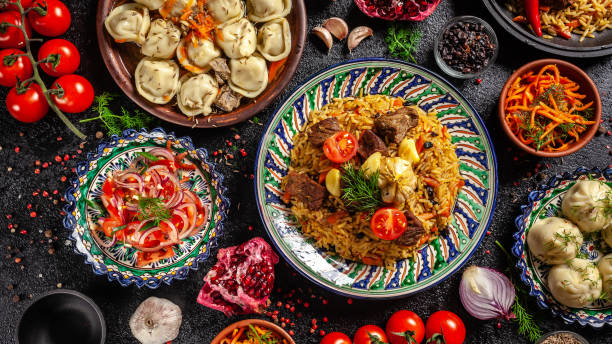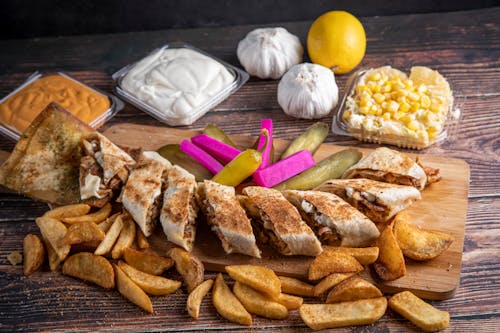
Arabic cuisine is a treasure trove of flavors, aromas, and culinary traditions that have evolved over centuries. Characterized by its use of spices, herbs, and fresh ingredients, this cuisine offers a diverse array of dishes that are both delicious and nutritious. One of the most iconic and beloved dishes in Arabic cuisine is “Maqluba,” a traditional dish that translates to “upside-down.” This article delves into the cultural significance, ingredients, preparation, and recipe for Maqluba, along with an exploration of other notable Arabic dishes that highlight the richness of this culinary heritage.
The Cultural Significance of Arabic Cuisine
Historical Roots
Arabic cuisine has deep historical roots, influenced by the diverse cultures and civilizations that have flourished in the Middle East. The exchange of culinary practices along trade routes, such as the Silk Road, brought together ingredients and techniques from Asia, Africa, and Europe. This rich tapestry of influences has resulted in a cuisine that is both varied and harmonious.
Social and Familial Bonds
Food in Arabic culture is more than sustenance; it is a means of bringing people together. Family gatherings, celebrations, and communal meals are integral parts of the culture. Traditional dishes are often prepared with great care and shared with loved ones, reinforcing social bonds and cultural identity.
Use of Fresh and Local Ingredients
Arabic cuisine places a strong emphasis on fresh, locally sourced ingredients. Vegetables, grains, legumes, meats, and dairy products form the foundation of many dishes. The use of spices and herbs such as cumin, coriander, turmeric, cinnamon, mint, and parsley enhances the flavors and provides a distinctive taste that is characteristic of Middle Eastern cooking.
Maqluba: The Crown Jewel of Arabic Cuisine
Ingredients and Preparation
Maqluba is a one-pot dish that beautifully combines rice, meat (usually chicken or lamb), and an assortment of vegetables such as eggplant, cauliflower, and potatoes. The dish is seasoned with a blend of aromatic spices that infuse the ingredients with rich flavors. The preparation involves layering the ingredients in a pot, cooking them together, and then flipping the pot to serve the dish upside-down, revealing a stunning presentation.
Recipe for Maqluba
Ingredients:
- 1 whole chicken or 500g of lamb, cut into pieces
- 2 cups of basmati rice
- 2 large eggplants, sliced
- 1 large cauliflower, cut into florets
- 2 large potatoes, sliced
- 1 large onion, chopped
- 3 cloves of garlic, minced
- 1 large tomato, sliced
- 1 teaspoon ground cumin
- 1 teaspoon ground coriander
- 1 teaspoon ground turmeric
- 1 teaspoon ground cinnamon
- 1 teaspoon ground black pepper
- Salt to taste
- 4 cups of chicken or vegetable broth
- Olive oil for frying
Instructions:
- Prepare the Ingredients:
- Wash the rice under cold water until the water runs clear. Soak the rice in water for about 30 minutes, then drain.
- Season the chicken or lamb pieces with salt, pepper, and a mix of ground cumin, coriander, turmeric, and cinnamon.
- In a large pot, heat some olive oil and brown the meat on all sides. Remove and set aside.
- Fry the Vegetables:
- In the same pot, add more olive oil if needed and fry the sliced potatoes until golden brown. Remove and set aside.
- Fry the eggplant slices until soft and golden. Remove and set aside.
- Fry the cauliflower florets until they are lightly browned. Remove and set aside.
- Layer the Ingredients:
- In a clean large pot, add a bit of olive oil and layer the bottom with sliced tomatoes.
- Layer the browned meat over the tomatoes.
- Add a layer of fried potatoes, followed by a layer of fried eggplants, and then the fried cauliflower.
- Sprinkle the chopped onions and minced garlic over the vegetables.
- Add the soaked and drained rice on top, spreading it evenly.
- Cook the Maqluba:
- Pour the chicken or vegetable broth over the rice, ensuring the rice is fully submerged. Add more broth or water if necessary.
- Cover the pot and bring it to a boil. Once boiling, reduce the heat to low and simmer for about 30-40 minutes, or until the rice is fully cooked and the liquid is absorbed.
- Let the pot sit for 10-15 minutes off the heat before flipping.
- Serve the Maqluba:
- To serve, place a large serving platter over the pot and carefully flip it upside down, allowing the Maqluba to release onto the platter.
- Garnish with fresh parsley or toasted nuts if desired.
- Serve hot with a side of yogurt or a fresh salad.
Exploring Other Notable Arabic Dishes
Hummus
Hummus is a staple in Arabic cuisine, made from blended chickpeas, tahini (sesame paste), lemon juice, garlic, and olive oil. This creamy and nutritious dip is often enjoyed with pita bread or fresh vegetables. It is rich in protein, fiber, and healthy fats, making it both delicious and beneficial for health.
Falafel
Falafel consists of deep-fried balls or patties made from ground chickpeas or fava beans, mixed with herbs, spices, and onions. Often served in pita bread with tahini sauce, vegetables, and pickles, falafel is a popular street food and a favorite among vegetarians.
Shawarma
Shawarma is a beloved Middle Eastern dish made from marinated meat (commonly chicken, beef, or lamb) that is slow-cooked on a vertical rotisserie. The meat is thinly sliced and typically served in a wrap or pita bread with garlic sauce, tahini, pickles, and vegetables. Shawarma’s tantalizing flavors and versatility make it a popular choice worldwide.
Tabouleh
Tabouleh is a refreshing salad made from finely chopped parsley, mint, tomatoes, onions, and bulgur wheat, dressed with olive oil and lemon juice. This vibrant and healthy dish is a perfect accompaniment to grilled meats or enjoyed on its own as a light meal.
Kibbeh
Kibbeh is a traditional dish made from ground meat (usually lamb or beef) mixed with bulgur wheat and spices. It can be served in various forms, including raw (kibbeh nayyeh), baked, or fried. Kibbeh is often enjoyed with yogurt sauce and fresh vegetables.
The Health Benefits of Arabic Cuisine
Nutrient-Rich Ingredients
Arabic cuisine is rich in nutrient-dense ingredients, including fresh vegetables, legumes, lean meats, whole grains, and healthy fats. These components provide essential vitamins, minerals, and antioxidants that contribute to overall health and well-being.
Balanced Diet
The variety of dishes in Arabic cuisine offers a balanced diet that includes carbohydrates, proteins, and fats. The emphasis on fresh and whole foods ensures that meals are both satisfying and nutritious.
Use of Spices and Herbs
Spices and herbs are integral to Arabic cooking, not only enhancing flavor but also providing health benefits. For example, turmeric has anti-inflammatory properties, and garlic is known for its immune-boosting effects.

Conclusion
Arabic cuisine is a vibrant and flavorful culinary tradition that reflects the rich cultural heritage of the Middle East. Dishes like Maqluba, with its layers of seasoned rice, meat, and vegetables, showcase the complexity and beauty of this cuisine. From the creamy hummus to the crispy falafel, the diverse array of Arabic dishes offers something for everyone. Beyond its delicious flavors, Arabic cuisine emphasizes the importance of fresh ingredients, balanced nutrition, and the joy of sharing meals with loved ones. Whether you are exploring these dishes for the first time or looking to deepen your appreciation for Middle Eastern flavors, the culinary journey through Arabic cuisine is sure to be a rewarding experience.














